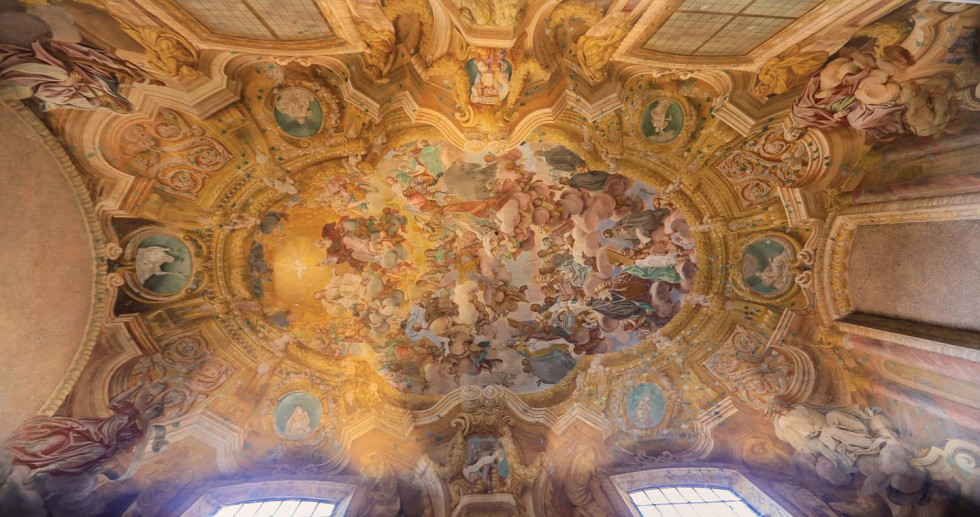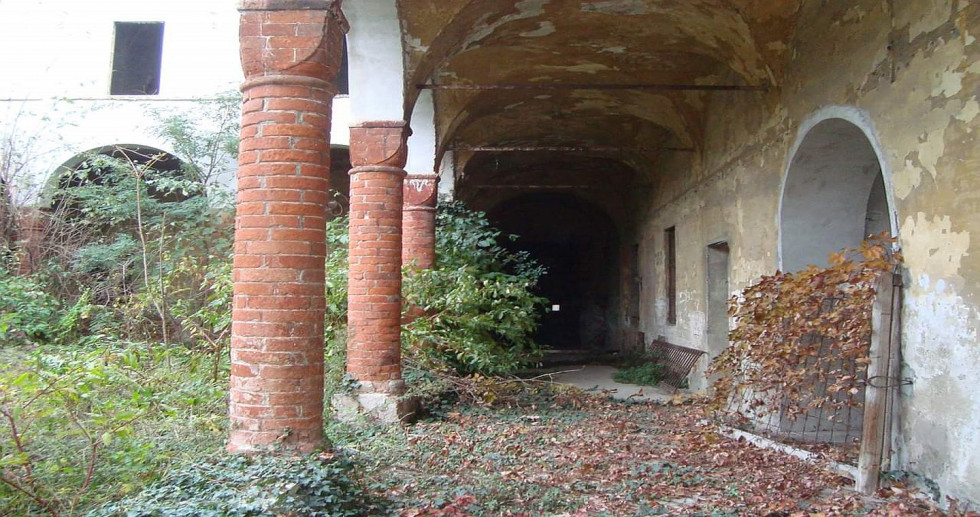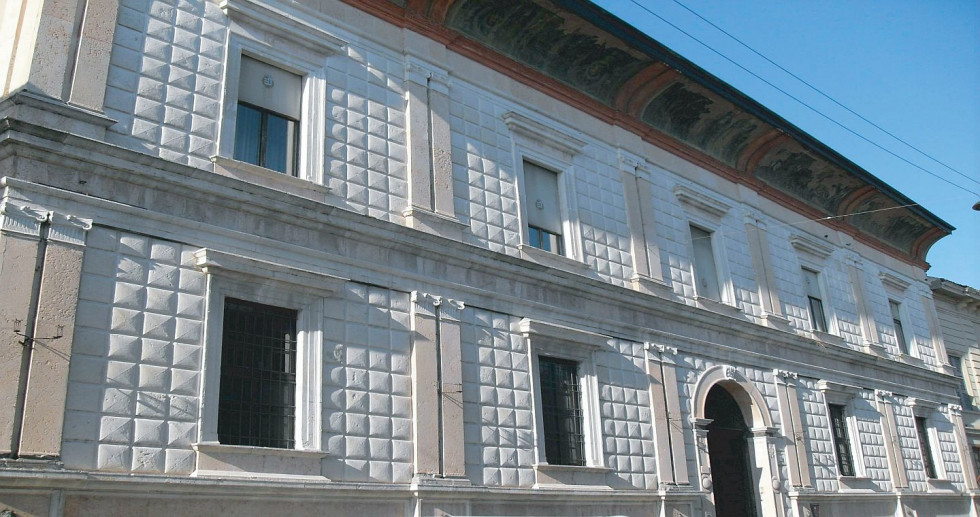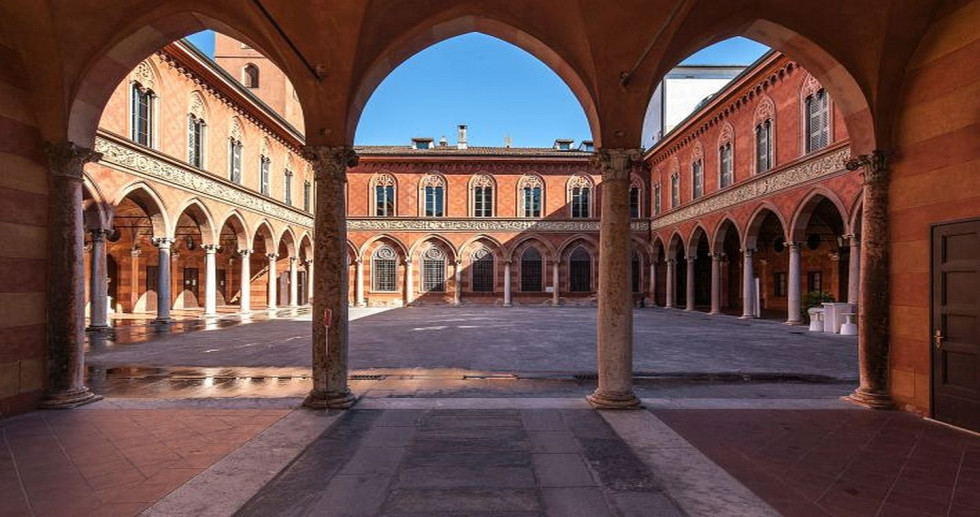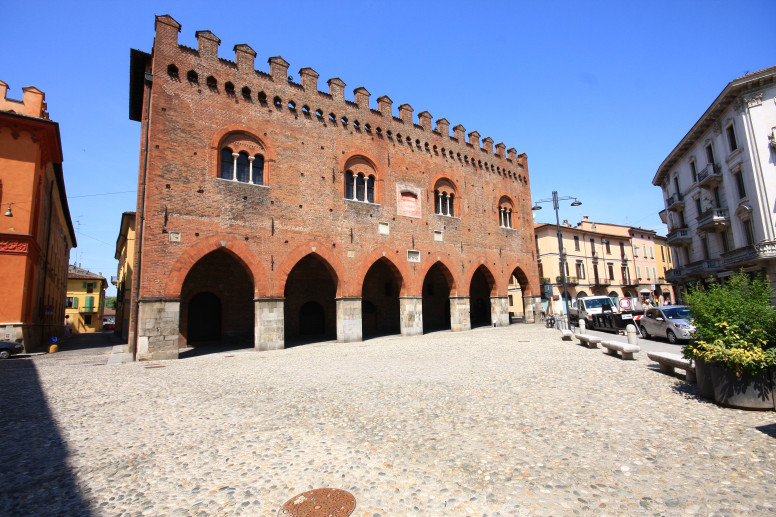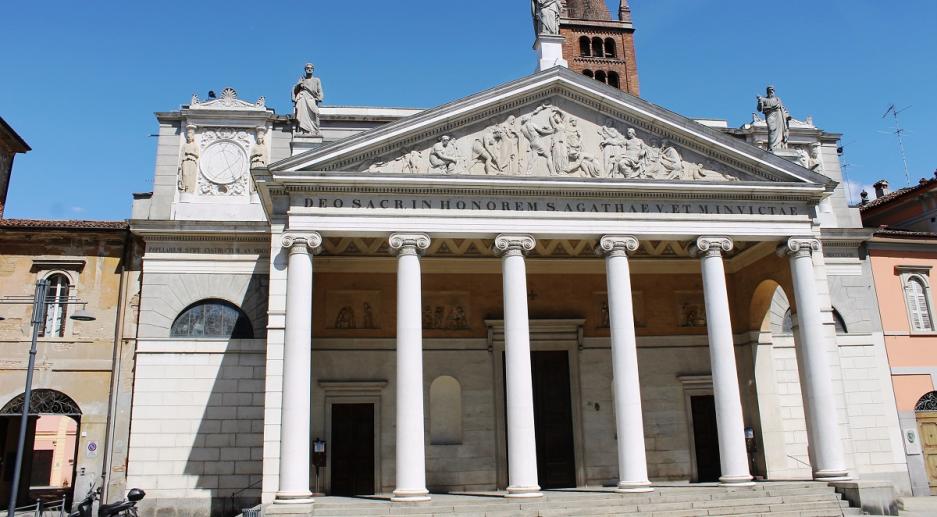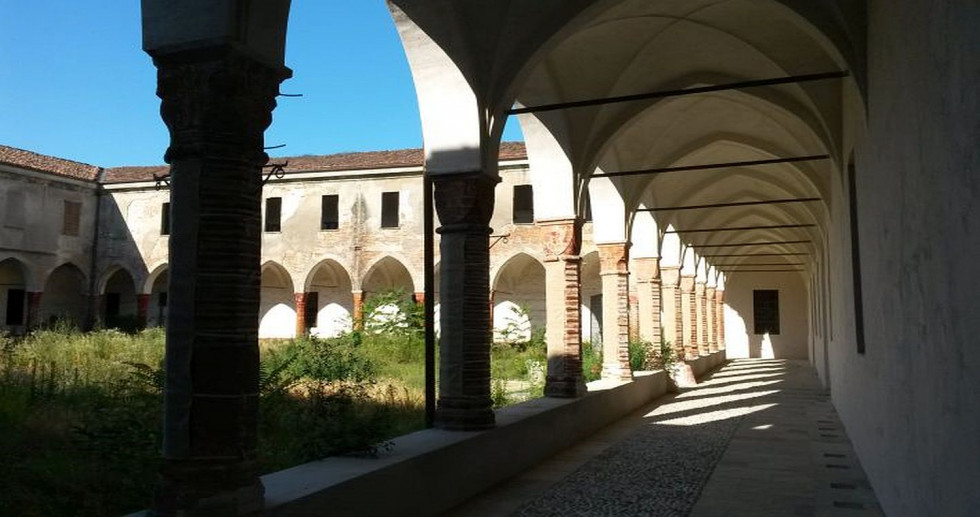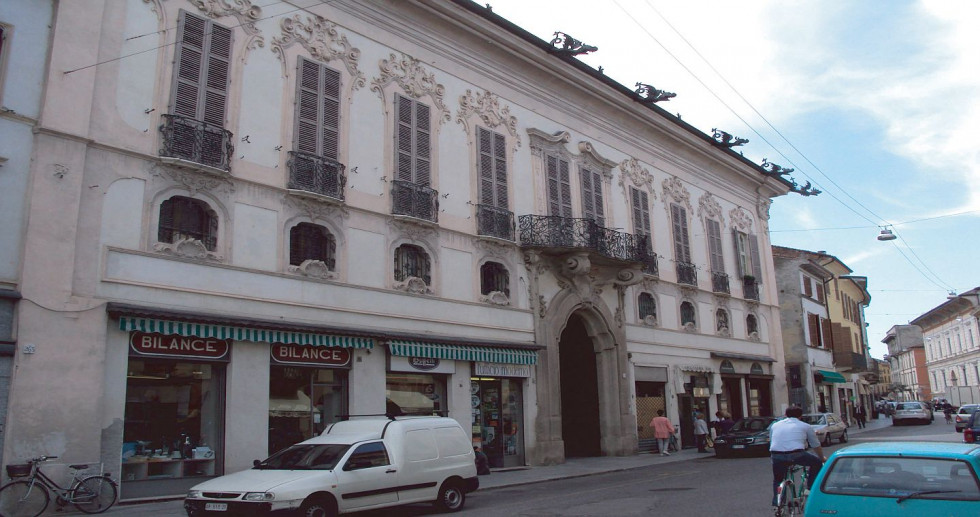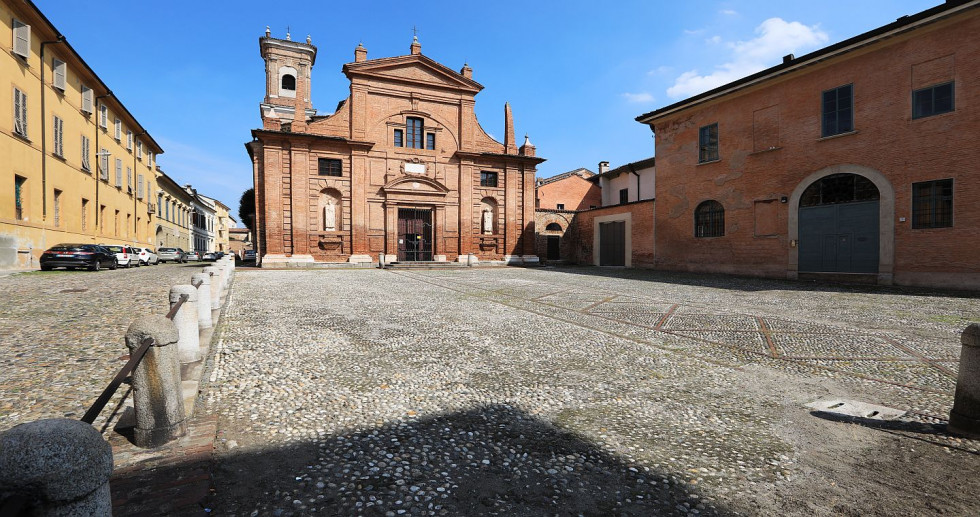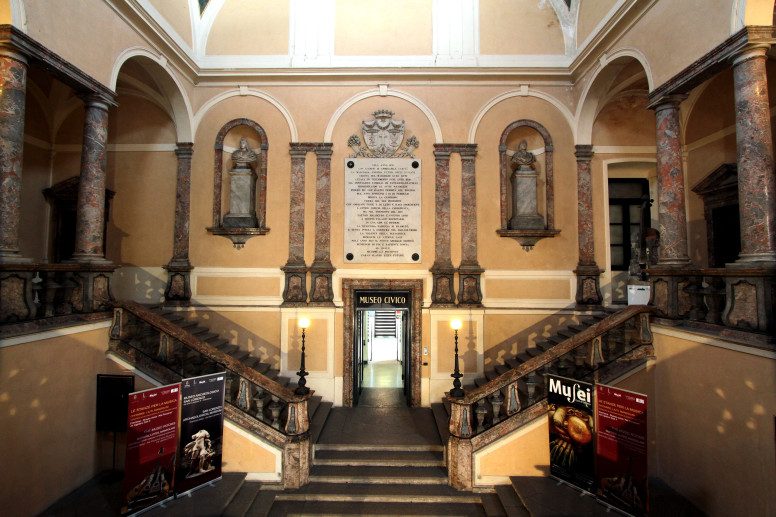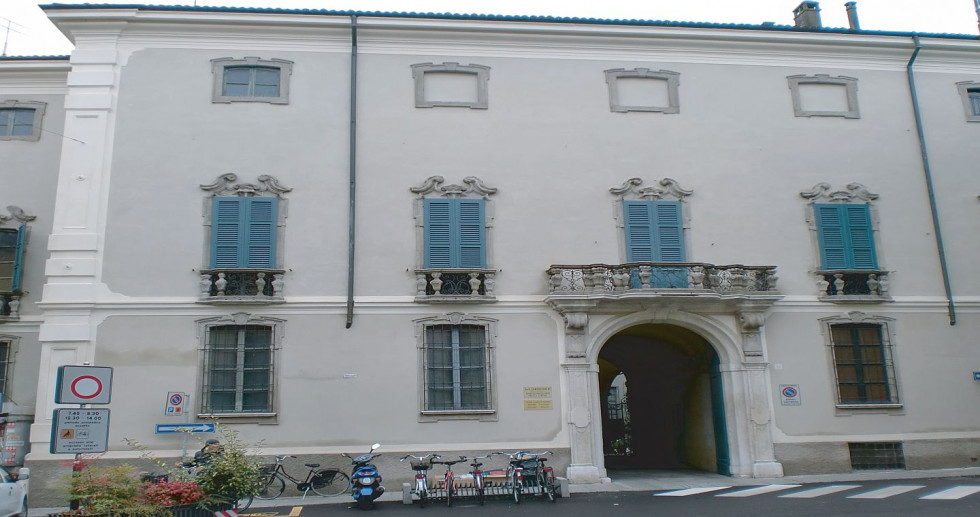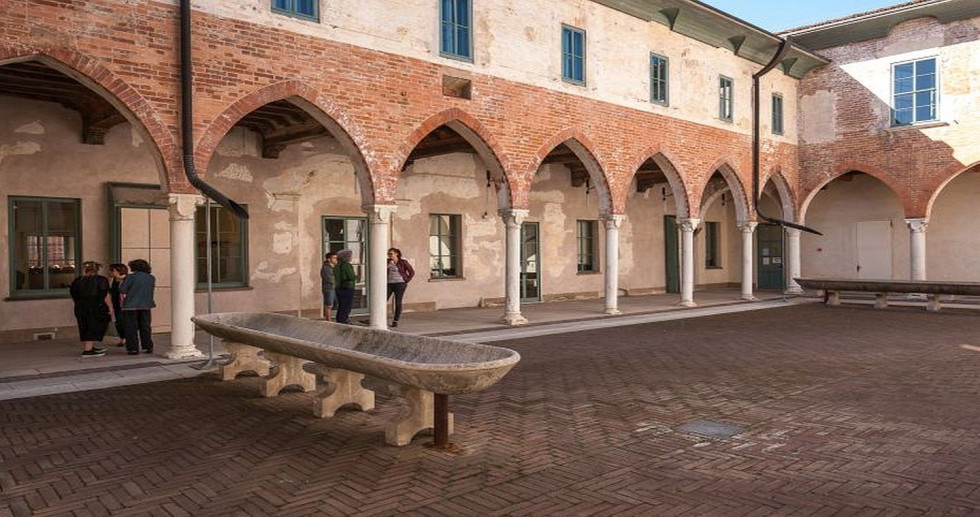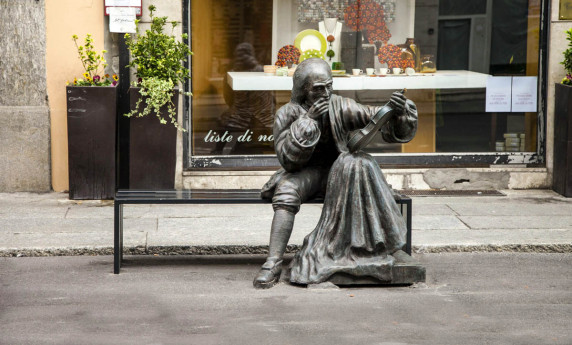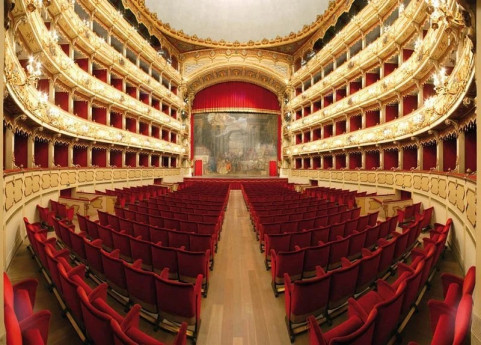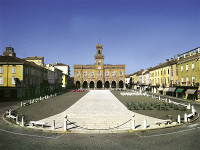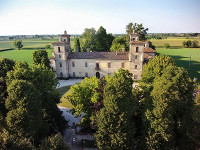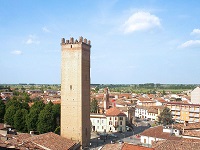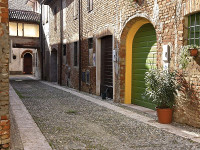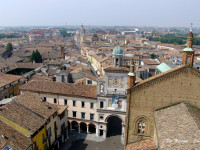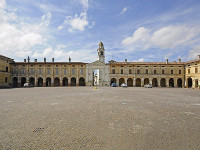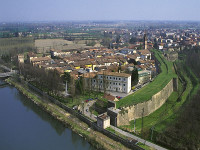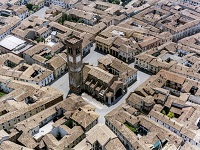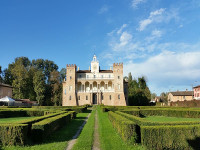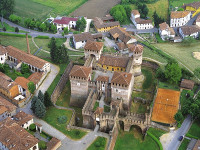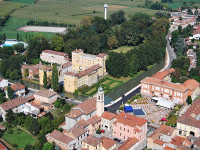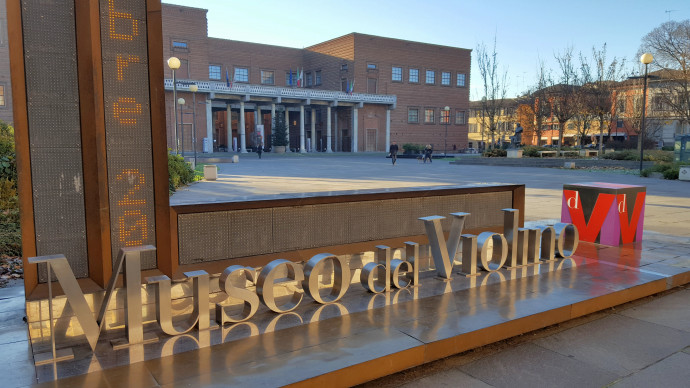- Art & Culture
- Religious Tourism
Chiesa di Sant'Ilario
The church stands on the site of a previous religious building erected in 1137 when land was donated to build a church in honour of Sant’Ilario.
Its history is complex from a religious point of view due to the various orders that have governed the adjoining convent.
In 1716, work began on the new religious complex, which was completed in 1766.
The new church was designed with a reversed orientation compared to the old one, with the entrance facing the city centre instead of the outside.
The façade remained unfinished and reveals, in its lower part, the intention to adapt to Baroque stylistic forms, while the upper part is still in its initial, rustic state.
The interior has a single nave with vaulted side chapels and is decorated with 18th-century frescoes attributed to Giovanni Battista Zaist, enclosed in elegant stucco frames.
Of particular note are: in the second chapel on the right, above the altar, two paintings - an oval depicting La Madonna con Sant’Anna e San Gioacchino by Francesco Boccaccino, and Il transito di San Giuseppe by Carlo Picenardi; on the right wall of the choir, Sant’Ilario vescovo, Santa Apollonia e Santa Caterina, attributed to Giulio Campi, and on the left, La Vergine con Bambino e San Gerolamo by Antonio Campi (1546); in the last chapel on the left, Angelo Massarotti's L'Immacolata con Santi e Angeli e la famiglia Felice da Pardo, Spanish governor of Cremona (1688).
Some works come from nearby monasteries that were suppressed between the end of the 18th century and the beginning of the 19th century. Of particular note are the statue of the Angelo Custode by Giulio Cesare Procaccini and the wooden group depicting the Madonna e San Giovanni Evangelista.
Opening hours
Feriali e festivi: 7.30/12.00 - 15.30/19.00
Gli orari potrebbero essere suscettibili di variazioni, per informazioni contattare il numero 0372 20503
